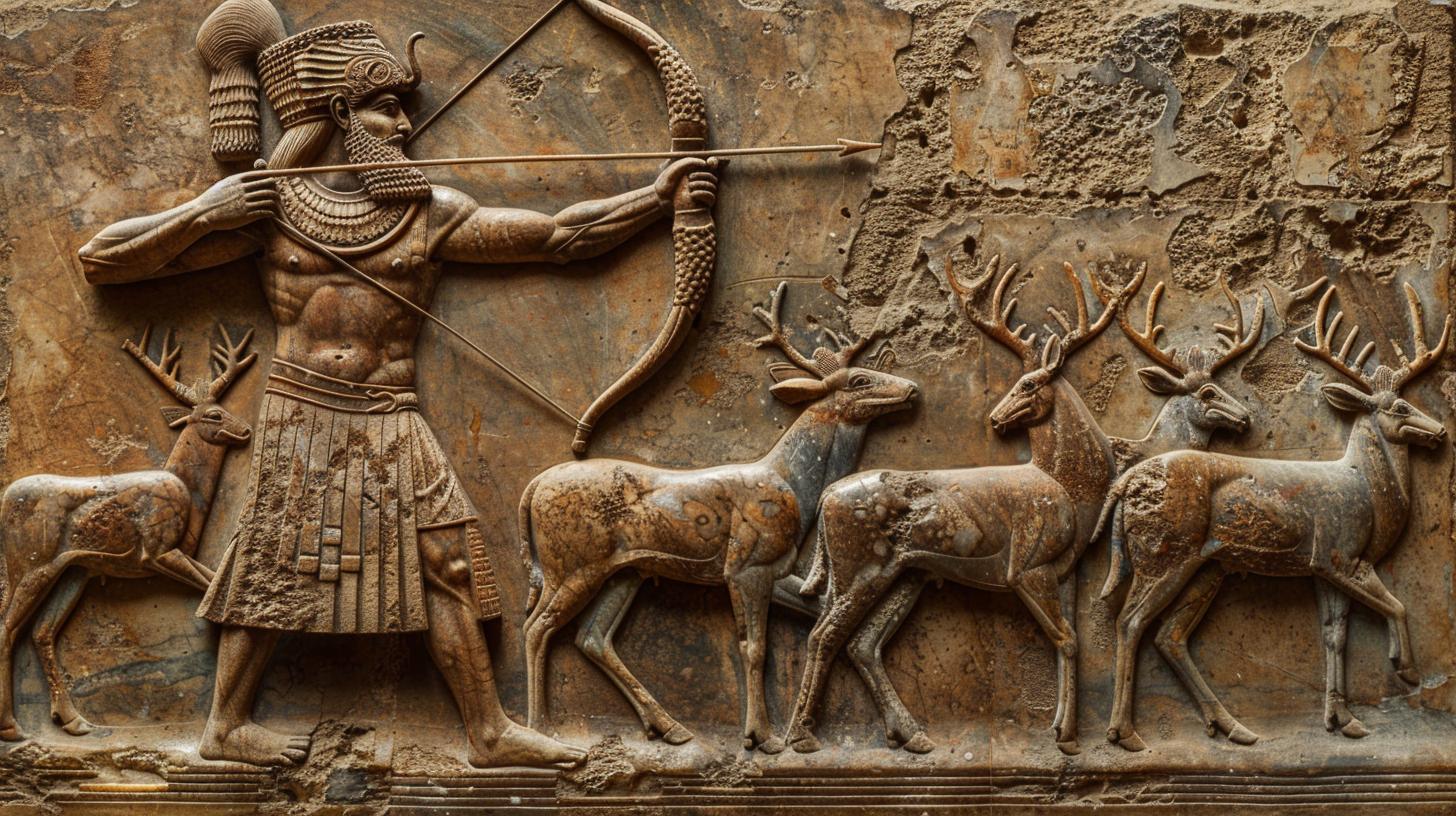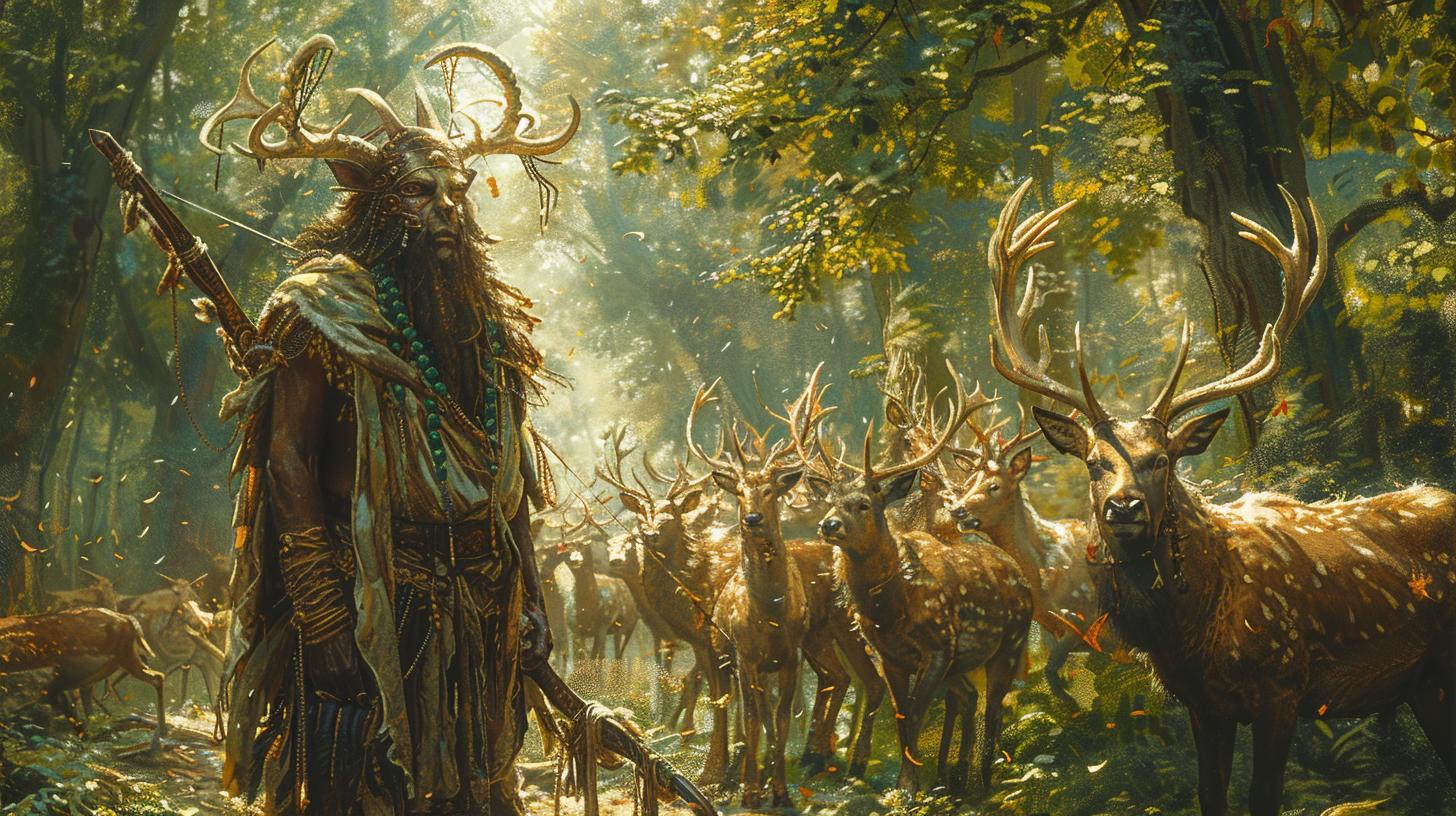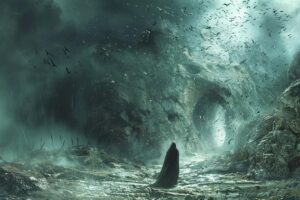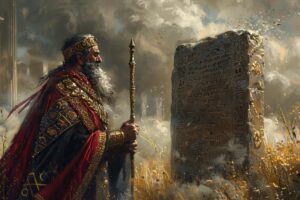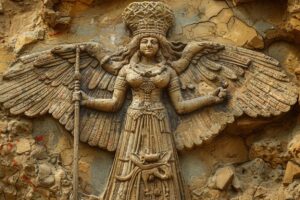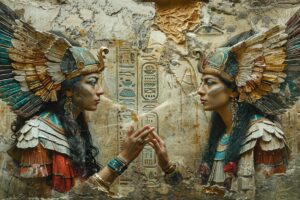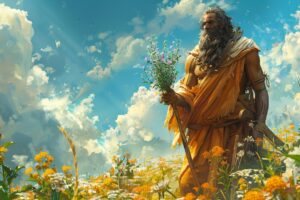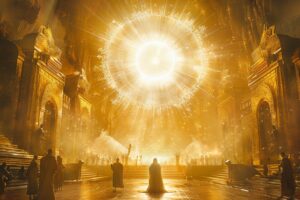Rundas God: Exploring the Hittite Deity of Hunting and Fortune
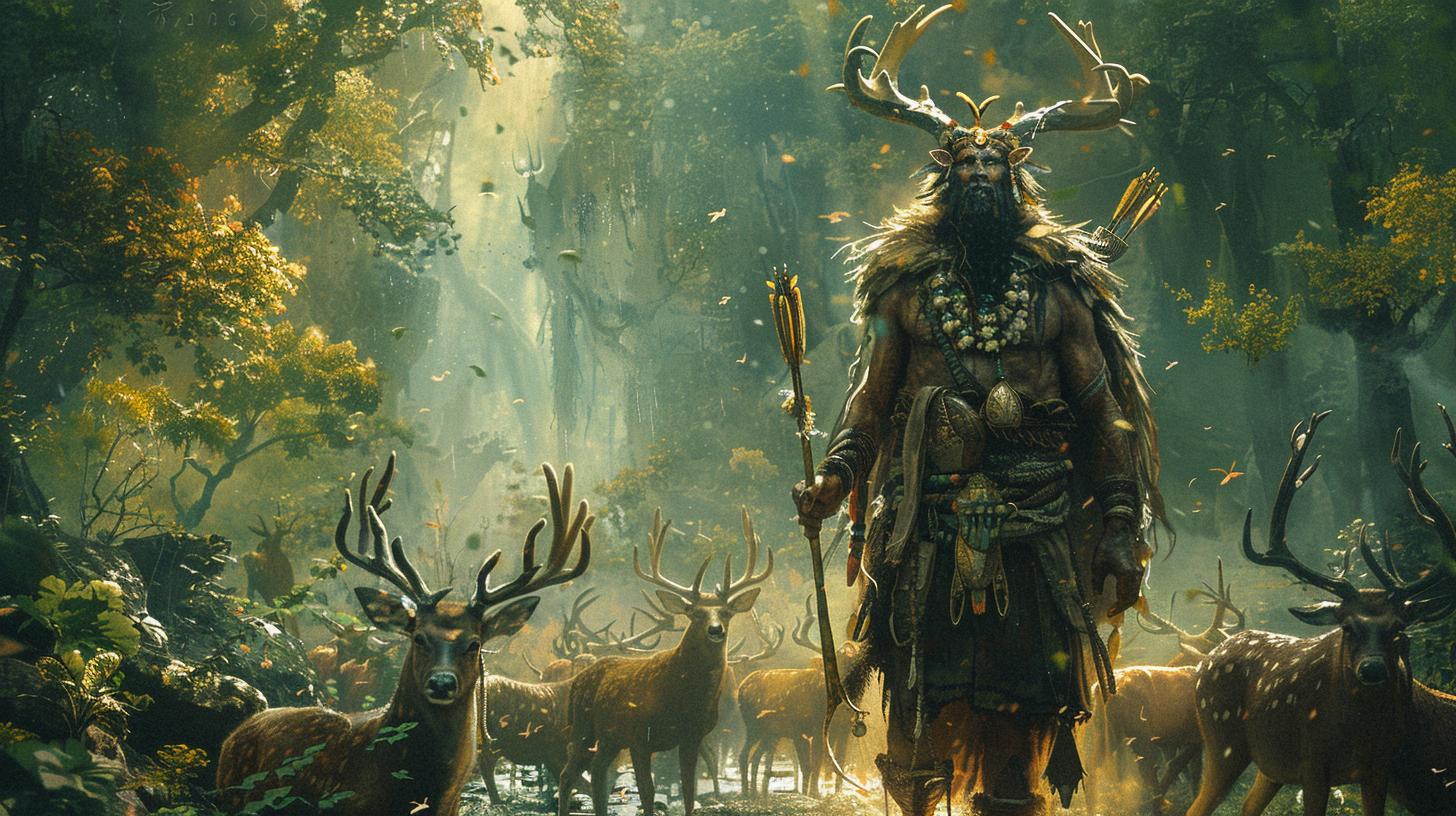
Rundas is a significant deity in Hittite mythology, known as the god of hunting and good fortune. His figure provides insight into the Hittite civilization and its religious practices.
Rundas is often depicted as a double eagle holding hares in his claws, symbolizing his power and association with hunting. Throughout Hittite myths, Rundas’s role underscores his influence and importance in their pantheon.
History and Significance
The history and significance of Rundas in the Hittite civilization highlight his crucial role in their culture and religion. Understanding his background and the impact on the Hittites provides keen insights into their ancient society.
Historical Background of Rundas
Rundas is a prominent deity in Hittite mythology, known primarily as the god of hunting and good fortune. Emerging from the ancient region of Anatolia, he held a significant position in the Hittite pantheon.
His depictions and myths reflect his historical importance.
Importance in Hittite Civilization
In Hittite civilization, Rundas was not just a symbol of hunting prowess but also a bringer of prosperity. His prominence is evident through various archaeological findings, inscriptions, and religious texts.
Temples and artifacts dedicated to him underline his revered status among the Hittites.
Impact on Hittite Religion
Rundas’ role within the Hittite religion was multifaceted. He was associated with the success of hunts and the general well-being of the people. Rituals and offerings were performed to gain his favor, ensuring both successful hunts and fortune.
His integration into broader Hittite religious practices highlights his significant spiritual influence.
- Depictions in religious texts
- Ritual significance
- Association with other deities
Iconography and Symbolism
The iconography and symbolism surrounding Rundas play a crucial role in understanding his significance and attributes within the Hittite pantheon. His depiction is rich in symbolic meaning, reflecting his powers and domains.
Representation of Rundas
Rundas is most often depicted as a double eagle holding a hare in each of its claws. This unique representation underscores his connection to both hunting and luck, emphasizing his multifaceted role in Hittite mythology.
Symbolism of the Double Eagle
The double eagle in Rundas’s iconography symbolizes power and heightened vision, essential traits for a deity associated with hunting. The image conveys a sense of dominance and omniscience, critical for tracking and capturing prey.
Meaning of the Hare in His Iconography
The hare, captured in the eagle’s claws, signifies the bounty of the hunt and the gifts of nature. It represents the successful hunt and the fortune bestowed by Rundas upon his followers, linking his role as both a hunter and a bringer of good fortune.
Mythological Context
The mythological context of Rundas delves into his roles, relationships, and interactions within Hittite myths and with other deities.
Rundas in Hittite Myths
Rundas appears prominently in various Hittite myths. He is depicted as a powerful entity governing hunting and fortune, often influencing outcomes of hunts and providing blessings. His myths often illustrate his prowess and the reverence the Hittites had for him as a crucial part of their mythology.
Relationship with Kubaba
In some myths, Rundas is described as the consort of Kubaba, the mother goddess. This bond highlights his integration into the pantheon, emphasizing his importance. Kubaba’s role as a nurturing figure complements Rundas’s attributes, showing a balance of power and fertility within their relationships.
Other Associated Deities and Figures
Rundas has connections with various deities beyond Kubaba. These associations often reflect the layered and interconnected nature of Hittite religion:
- Linked to Santas in certain myths, creating a complex divine relationship.
- Seen in contexts alongside other hunting gods, showing a shared symbolism.
- His integration symbolizes interaction and syncretism with Mesopotamian deities like Zababa.
Cult and Worship Practices
The worship practices dedicated to Rundas reflect his importance in Hittite society.
They encompass rituals, sacred sites, and evolving practices through different periods.
Rituals and Offerings
Worship of Rundas involved specific rituals and offerings to gain favor and good fortune in hunting.
Typical Offerings
- Animal sacrifices, particularly hares
- Libations of wine and other liquids
- Offerings of game hunted as a sign of respect
Ritual Practices
- Ceremonial hunts invoking Rundas’ favor
- Prayers and chants to honor the deity
- Seasonal festivals marking hunting cycles
Temples and Sacred Sites
Temples and sacred sites dedicated to Rundas served as epicenters of worship and communal gatherings.
Important Temples
- Sanctuary of Hattusa, the capital of the Hittite Empire
- Temples in regional centers frequented by hunters
Sacred Sites
Sacred groves and hunting grounds were often associated with Rundas, where rituals were performed to seek his blessing before hunts.
Evolution of Worship Practices
The worship practices of Rundas evolved over time, reflecting changing societal norms and cultural exchanges with neighboring civilizations.
Adaptations over Time
- Initial practices focused solely on hunting rites
- Integration of agricultural elements as society evolved
- Influences from Mesopotamian religious practices
These changes indicate the dynamic nature of Rundas worship from pre-Hittite periods through the fall of the Hittite Empire.
Comparative Analysis
Analyzing Rundas in comparison with other deities reveals connections and differences that highlight his unique role in ancient religions.
Similarities with Other Hunting Gods
Rundas shares common traits with various hunting gods across different cultures. Key similarities include:
- The dual focus on hunting and fortune, akin to Artemis in Greek mythology.
- Representation linked to powerful animals, similar to Diana in Roman mythology.
- Embodiment of both protection and predatory prowess.
Rundas and Mesopotamian Deities
Interactions with Zababa
Rundas has been equated with Zababa, the Mesopotamian god of war and hunting.
This cultural interchange highlights:
- Shared attributes of martial prowess and hunting skills.
- Influences from neighboring societies adapting Rundas into their own pantheon.
Comparative Iconography
The iconography of Rundas, such as the double eagle, provides a visual parallel with symbols used for other hunting deities. Important points include:
- The double eagle signifies dominance and sharp vision, paralleling symbols like the hawk in Egyptian mythology.
- The hare in Rundas’s iconography represents agility and abundance, similar to animals representing fertility and agility in various cultures.
Archaeological Evidence
The archaeological study of Rundas has yielded significant artifacts and insights about his worship and representation in Hittite society.
Key Archaeological Discoveries
Numerous key discoveries have been made in the region of Anatolia that provide evidence of Rundas’s worship:
- Inscribed tablets depicting prayers and rituals dedicated to Rundas.
- Artifacts featuring the double eagle symbol with hares, representing Rundas.
- Temple remains and statues showing his iconic representations.
Interpretation of Artifacts
The artifacts associated with Rundas offer deep insights into his role and significance.
The double eagle iconography symbolizes strength and vision, while the presence of hares underscores his connection to hunting and nature’s bounties.
Interpretations suggest these symbols were powerful representations meant to invoke the deity’s favor and protection in hunting expeditions and daily life.
Ongoing Research and Findings
Research in the field continues to unveil critical aspects of Rundas’s cult:
- Continued excavations in ancient Hittite cities uncover more artifacts.
- Scholars analyze inscriptions to better understand the rituals and prayers offered to Rundas.
- Recent findings include detailed temple layouts and ceremonial objects.
These ongoing studies enhance our understanding of Rundas’s worship and his cultural impact.
Academic Perspectives
Rundas has been the focus of various academic studies analyzing his role and representation in Hittite mythology.
Contributions from Key Scholars
Several scholars have made significant contributions to the study of Rundas:
- Manfred Lurker: Detailed aspects of Rundas’s representation and cult.
- Hans Gustav Güterbock: Analyzed Rundas’s place in Hittite religious texts.
- Margaret Miller: Explored Rundas’s iconography in Hittite art.
Analysis in Modern Studies
In modern studies, Rundas is often interpreted through various lenses:
- Symbolism: Rundas is examined as a symbol of hunting and fortune.
- Comparative Religion: Researchers compare Rundas with similar deities in other ancient cultures.
- Cultural Impact: Studies focus on how Rundas influenced the Hittite and subsequent cultures.
References in Academic Literature
Rundas is frequently cited in numerous academic works, including:
- “The Routledge Dictionary of Gods and Goddesses, Devils and Demons” by Manfred Lurker
- Articles in journals like “Anatolian Studies” and “Near Eastern Archaeology”
- Entries in encyclopedic databases of ancient mythologies
Cultural Impact and Legacy
The cultural impact and legacy of Rundas are noteworthy.
This section explores his representation in Hittite culture, influence on later civilizations, and modern interpretations.
Representation in Hittite Culture
Rundas held a significant place in Hittite culture, symbolized by his distinctive iconography of a double eagle clutching hares. This imagery underscores his role in hunting and the bestowment of good fortune, prevalent in Hittite art and artifacts.
Influence on Later Civilizations
The interconnection between Hittite and surrounding Middle Eastern cultures allowed the attributes of Rundas to influence neighboring civilizations. Traces of his symbolism and worship can be seen in the syncretistic adoption and adaptation of similar gods in these regions.
Rundas in Modern Interpretations
In modern times, Rundas continues to captivate scholars and enthusiasts. His dual nature as a god of hunting and fortune resonates in contemporary studies of ancient religions, with academic analyses shedding light on his complex role within the Hittite pantheon.
Today, museums and educational institutions often feature Rundas in exhibits on Hittite culture. This inclusion highlights his enduring legacy and ongoing fascination for historical and religious studies.
Frequently Asked Questions (FAQs)
This section addresses common questions regarding Rundas, the Hittite god of hunting and good fortune.
What is Rundas known for?
Rundas is chiefly recognized for his role as the god of hunting and good fortune in Hittite mythology. His symbolism, notably the double eagle holding hares, underscores his connection to hunting and his power to bestow good fortune.
How was Rundas represented in Hittite art?
Rundas is depicted as a double eagle with hares in his claws. This imagery signifies his prowess in hunting and his ability to grant good fortune. Such representations are found on various artifacts, including seals and carved stones.
What rituals were associated with Rundas?
Worship practices dedicated to Rundas involved:
- Sacrificial offerings, typically of game animals.
- Ritual hunts to honor his role as a hunting god.
- Prayers and hymns invoking his blessings for successful hunts and good fortune.
How does Rundas compare to other hunting gods?
Rundas shares similarities with other deities of the hunt, such as:
- Ártemis from Greek mythology, goddess of the hunt and wilderness.
- Diana from Roman mythology, also a hunting goddess.
These gods all embody the duality of hunting prowess and a deeper symbolic connection with nature.
What are some key archaeological finds related to Rundas?
Significant discoveries include:
- Inscribed seals depicting Rundas and his symbolic double eagle.
- Carved stone reliefs and temple sculptures.
- Ancient texts mentioning Rundas and his role in Hittite rituals.
These artifacts provide valuable insights into his worship and cultural significance.

